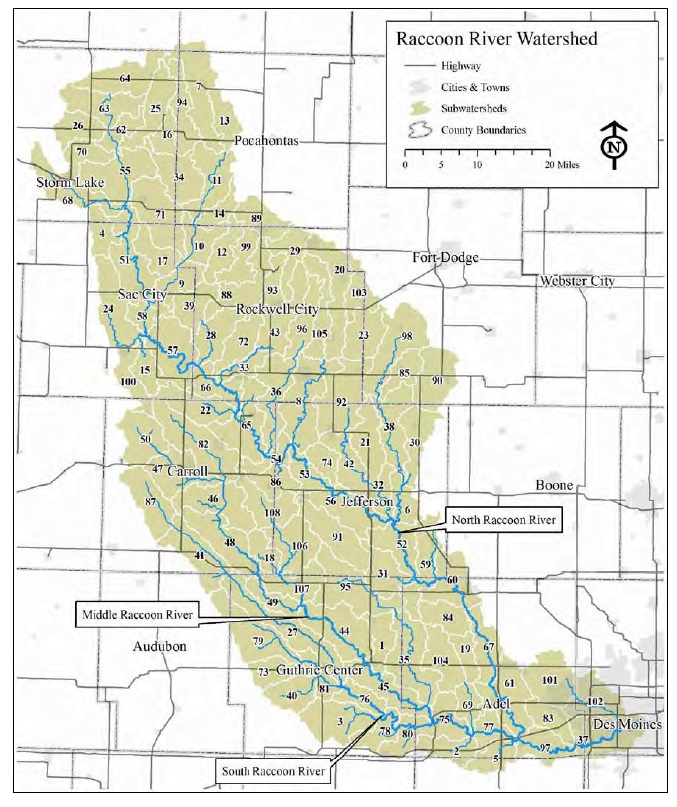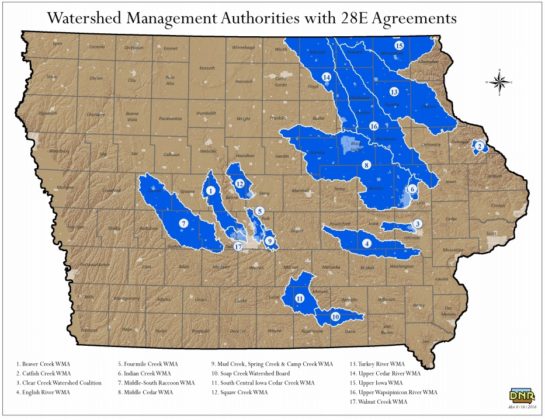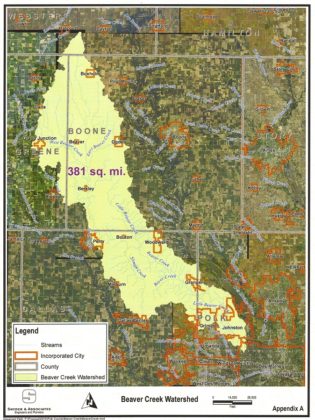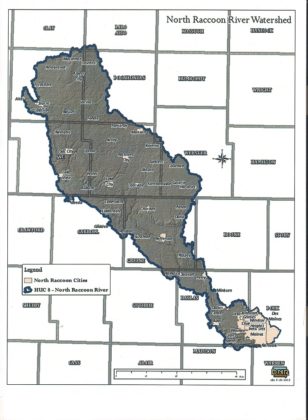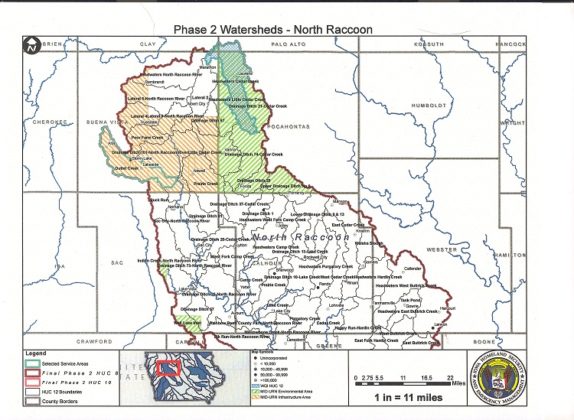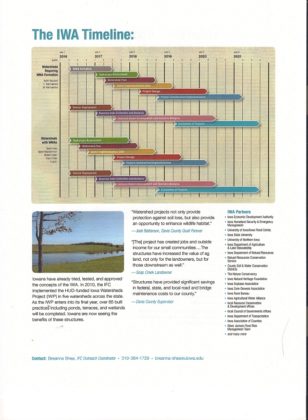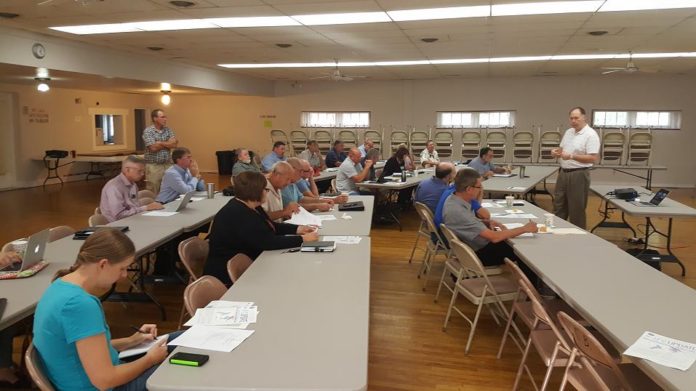
The city of Perry is now a member of one newly formed watershed management authority (WMA), the Beaver Creek WMA, and is likely soon to become a member of another now forming, the massive North Raccoon River WMA. An organizing meeting held Sept. 8 in Lake City was a big step toward the birth of the North Raccoon WMA.
The Iowa legislature created the legal basis for WMAs after the disastrous 2008 floods. Their purpose is to put in place conservation practices, such as farm ponds and wetlands, that control downstream flooding and improve water quality in the watershed.
The usual course for Iowa’s WMAs — there are now 17 — is to form themselves and then start chasing grant dollars. The singular virtue of the North Raccoon WMA is the $3.8 million in flood-control funding ready and waiting for it from the U.S. Department of Housing and Urban Development (HUD). All the North Raccoon WMA has to do to get the HUD money is form itself legally.
Once formed, the North Raccoon will be the biggest WMA in Iowa in terms of its territorial extent. The watershed drains 2.3 million acres of cropland in west-central Iowa and provides drinking water to 500,000 people in Des Moines and the surrounding region.
It will also be the largest WMA in terms of the number of members. Cities, counties and county soil and water conservation districts (SWCDs) are eligible for membership, and the North Raccoon WMA’s eligibility list includes some 57 cities, 14 counties and 14 SWCDs.
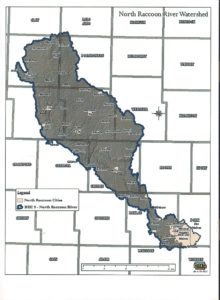
Representatives from five of those cities, five counties and one SWCD attended the Lake City meeting, which was organized by the Iowa Department of Natural Resources and the Iowa Flood Center.
John Muir of rural Jefferson, chair of the Greene County Board of Supervisors, attended the North Raccoon organizing meeting and said he would recommend joining the WMA to his fellow supervisors.
“I think their intentions are good,” Muir said. “There’s nothing that makes me feel like Greene County shouldn’t be involved in it. I think it’s good they’ve got the money. I was kind of excited. I though, if you have that kind of money, you could do a lot of bioreactors. You could definitely get a lot of farmers’ attention.”
While water quality is part of the WMAs’ mandate, the HUD funding is earmarked specifically for flood control practices, according to Larry Weber, research engineer and executive director of the University of Iowa’s IIHR—Hydroscience and Engineering research center. Weber gave the opening remarks at the Lake City meeting.
“This is a flood-first program from HUD,” Weber said, “but it’s not just about rebuilding and recovering and putting money into infrastructure. That’s important, but it’s about developing a plan to move to the future and to make sure that we’re better prepared, so we want to reduce flooding, improve water quality, increase resilience and gain stakeholders.”
Weber assured the local lawmakers and public employees they would be the ones to lead the North Raccoon WMA. It will not be a top-down power structure, he said.
“We want the planning work, the goal setting, the ideas of locations of practices — all of that work is to be led locally,” he said. “We’ll provide the technical assistance, but we want this to be locally led. We’re not going to come here and tell you what to do.”
The $3.7 million for the North Raccoon WMA is part of a $97 million pot Uncle Sam gave to Iowa in January for nine statewide watershed improvement projects called the Iowa Watershed Approach. Along with the North Raccoon WMA, the $97 million in HUD money is supporting the creation of WMAs for Bee Branch Creek, Clear Creek, East Nishnabotna River, English River, Middle Cedar River, Upper Iowa River, Upper Wapsipinicon River and West Nishnabotna River.
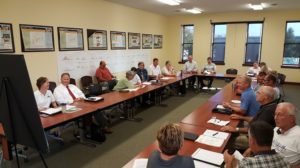
Perry is also one of 25 members in the Beaver Creek WMA, which is both smaller than the North Raccoon WMA and further along in its formation.
It filed legal papers July 25 with the Iowa Secretary of State’s office and held its first formal meeting Sept. 20 at the Towncraft Center in Perry.
Membership includes 16 cities, five SWCDs and four counties. The Dallas County Board of Supervisors did not sign on with the Beaver Creek watershed group.
Muir was similarly supportive of Greene County’s membership in the Beaver Creek WMA, both for its flood-control potential and the opportunity to address water quality in a collaborative way.
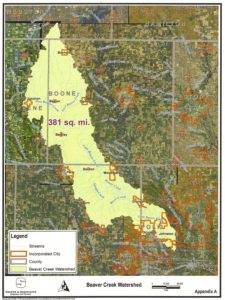
Water quality is “not an issue that should be taken lightly,” Muir said, “and it’s not an issue that is going away. You’ve just got to look down the road. Whatever anybody feels about the Water Works lawsuit, water quality is an issue and something that’s going to have to be addressed some time and some place, and I feel this is a much more constructive way to address these things than the lawsuit. ”
The Des Moines Water Works sued three northwest Iowa counties in 2015, arguing underground field tiles act as conduits to carry nitrates into the Raccoon River, a prime source of drinking water for the utility’s 500,000 customers. The case is working its way through the federal courts.
The salience of the water-quality quality issue also appears to be increasing in Iowa politics, with the Farm Bureau and the state’s major commodity groups now shouldering the cost of legally defending Iowa farmers’ right to pollute the state’s waterways and some candidates for elected office using the Des Moines Water Works lawsuit as a wedge issue against incumbent members of the do-nothing state legislature.
